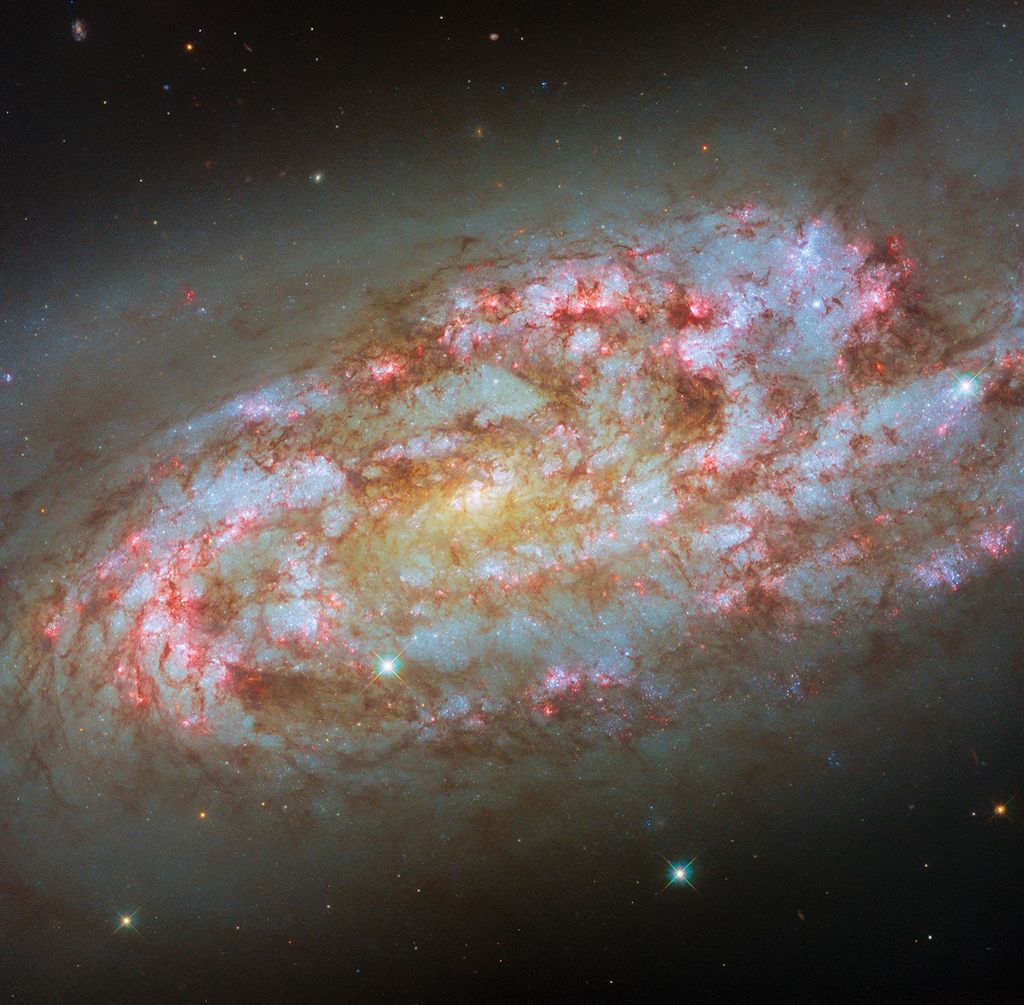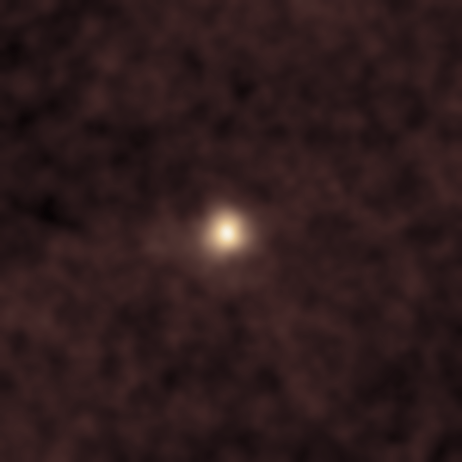NASA/ESA’s SOHO Observes Interstellar Comet 3I/ATLAS
The ESA (European Space Agency) and NASA Solar and Heliospheric Observatory, or SOHO, spacecraft captured a glimpse of interstellar comet 3I/ATLAS on Oct. 15–26. During this time period, the spacecraft’s Large Angle and Spectrometric Coronagraph (LASCO) instrument suite spotted the comet crossing its field of view from approximately 222 million miles (358 million kilometers) away, or more than twice Earth’s distance from the Sun.
The SOHO spacecraft orbits the Sun-Earth Lagrange point 1, a region of gravitational balance approximately one million miles closer to the Sun along the Sun-Earth line. Comet 3I/ATLAS was expected to be too faint for SOHO to see, but detailed image processing and overlaying (or “stacking”) subsequent telescope images ultimately generated the image shown above, where the comet appears as a slight brightening in the center. Several other NASA spacecraft are imaging the historic interstellar visitor as it passes through the solar system.
Launched in 1995, the SOHO spacecraft has become the most prolific comet hunter of all time. With the help of citizen scientists participating in the NASA-funded Sungrazer Project, SOHO’s imagery has led to the discovery of more than half of all known comets (over 5,186 as of this writing).
By Miles Hatfield
NASA’s Goddard Space Flight Center, Greenbelt, Md.























